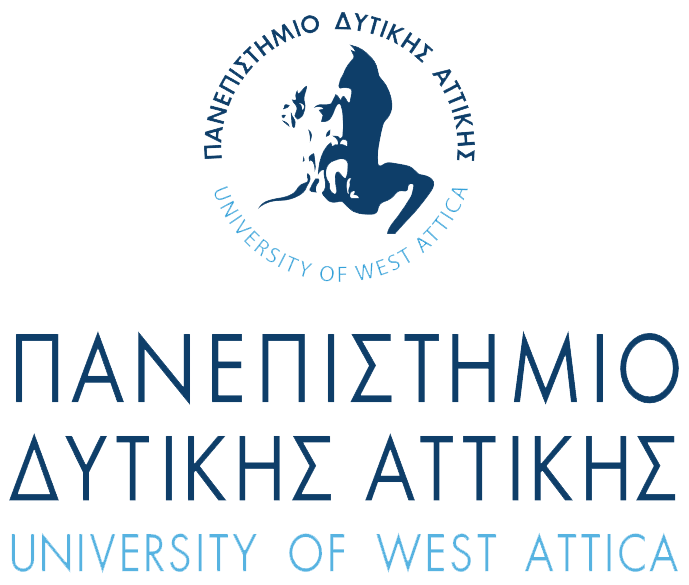- Details
- Details
Η ημερίδα "Drones, Video, Photography" πρόκειται να πραγματοποιηθεί στις 31 Μαΐου 2024 στο Συνεδριακό κέντρο Αρχαίου Ελαιώνα του Πανεπιστημίου Δυτικής Αττικής. Η εκδήλωση αποτελεί μια μοναδική ευκαιρία για τους ενδιαφερόμενους να μάθουν βασικές αρχές για τα drones και τη φωτογραφία αλλά και να εξερευνήσουν την πρόοδο, τις εφαρμογές και τις προοπτικές του μέλλοντος.
Με την ταχύτατη εξέλιξη της τεχνολογίας, τα drones έχουν γίνει ολοένα και πιο ευέλικτα και προσιτά εργαλεία στους τομείς της φωτογραφίας και της κινηματογράφησης. Από την καταγραφή εντυπωσιακών εικόνων και βίντεο από ψηλά, μέχρι την εφαρμογή τους στην τέχνη, την πολιτιστική κληρονομιά, ή και τον αγροτικό τομέα, οι δυνατότητες των drones είναι αμέτρητες. Η ημερίδα θα εστιαστεί στις τελευταίες εξελίξεις της τεχνολογίας, θα εξετάσει τη χρήση των drones για καταγραφή βίντεο και φωτογραφία, καθώς και τις εφαρμογές αυτής στην ζωή μας.
Η ημερίδα αποτελεί μια μοναδική ευκαιρία για τους συμμετέχοντες να γνωρίσουν ειδικούς και καθηγητές από τον τομέα, που θα φιλοξενηθούν και θα μοιραστούν τις γνώσεις τους παρουσιάζοντας τα τελευταία ευρήματα και τις τεχνολογικές εξελίξεις που αφορούν τους τομείς των drones, της κινηματογράφησης, και της φωτογραφίας. Επιπλέον, θα γίνει μια παρουσίαση/επίδειξη drones, προσφέροντας στους συμμετέχοντες τη δυνατότητα να εξοικειωθούν και να αποκτήσουν πρακτική εμπειρία.
Το Πανεπιστήμιο Δυτικής Αττικής χαιρετίζει τη διοργάνωση αυτής της σημαντικής εκδήλωσης και προσκαλεί τους φοιτητές, τους επαγγελματίες και τους ενδιαφερόμενους να συμμετάσχουν και να εξερευνήσουν το συναρπαστικό κόσμο των drones, της φωτογραφίας και της κινηματογράφησης.
Στο τελευταίο μέρος της ημερίδας θα παρουσιαστούν οι εκπαιδευτικές αλλά και ερευνητικές δράσεις του Πανεπιστημίου Δυτικής Αττικής, στοχεύοντας στην ενημέρωση αλλά και εξερεύνηση πιθανών συνεργασιών με τον Ακαδημαικό και Βιομηχανικό χώρο.
Η ημερίδα θα υλοποιηθεί δια ζώσης και μέσω διαδικτύου στο YouTube κανάλι του Πανεπιστημίου Δυτικής Αττικής.
Περιορισμένες θέσεις παρακολούθησης. Θα τηρηθεί σειρά προτεραιότητας. Θα δοθούν Βεβαιώσεις Συμμετοχής στους συμμετέχοντες/συμμετέχουσες.
Για περισσότερες πληροφορίες και εγγραφές, επισκεφθείτε την ιστοσελίδα της ημερίδας στο σύνδεσμο http://uav.uniwa.gr/.

- Details
- Details
Κυριακή 14 Απριλίου, 12:10 - 12:40: Cobotics robolution: Αυτόνομη χρήση και ROI ρομποτικών συστημάτων καθαρισμού. Ομιλητής, Γεράσιμος Γερολυμάτος, Founder & CEO, Gerobo International.Πρόσκληση για τη 1η Έκθεση Αυτοματισμού & Ρομποτικής που διοργανώνεται από 12-14 Απριλίου 2024 στο Metropolitan Expo. Το τρίπτυχο τομέων της Gerobo αφορά σε Cobots, Drones και Cybersecurity και αφορά στους κλάδους Βιομηχανίας, Logistics, Ναυτιλίας, Υγείας και Horeca, με επίκεντρο πάντα τον άνθρωπο ως χειριστή, επόπτη και διαμορφωτή των ρομποτικών λύσεων, στο πλαίσιο των Smart Cities, Industry & Factory 4.0 & 5.0.Στο πλαίσιο της έκθεσης, η Gerobo καλεί τους ενδιαφερόμενους για κάτι ακόμα πιο σημαντικό. H νέα πρόταση του GEROBOT αποτελεί ιδιαίτερης προσοχής αφού ήρθε η ώρα να μπορεί η κάθε επιχείρηση να έχει τα δικά της cobots ανάλογα με τις δικές της ανάγκες. Σας αναμένουμε λοιπόν να διαμορφώσουμε το δικό σας ρομπότ.Τα cobots έχουν τη δυνατότητα να αυξήσουν την παραγωγικότητα και δίνουν νέα δυναμική στους εργαζόμενους με μεγαλύτερη ευελιξία στην καθημερινότητα τους αυξάνοντας τις δεξιότητες για αλληλεξαρτώμενη συνεργασία - Οξυδέρκεια, Προβλεψιμότητα, Αμοιβαίος έλεγχος. Σε ότι αφορά την ποιότητα εργασίας τα οφέλη αφορούν σε ανθρωποκεντρική προσέγγιση στις δεξιότητες του προσωπικού, μείωση βαρετών εργασιών, εξοικονόμηση πόρων. Ενίσχυση απασχόλησης σε πιο σημαντικά καθήκοντα, ελάχιστος χρόνος συντήρησης των ρομπότ, ουσιαστική βοήθεια στην επιχείρηση και στο προσωπικό και ακόμα πιο δυναμική λύση με απομακρυσμένη χρήση και λειτουργία μέσω κινητού, τάμπλετ, Η/Υ. Εισαγωγή τεχνητής νοημοσύνης στον οργανισμό που καθιστά ελεύθερα τα cobots στην κίνηση τους με αποφυγή εμποδίων, επαναδρομολόγηση και απόδοση διαφορετικών tasks. Σύγχρονη εικόνα της επιχείρησης με εισαγωγή AI, Machine learning, Robotics.



